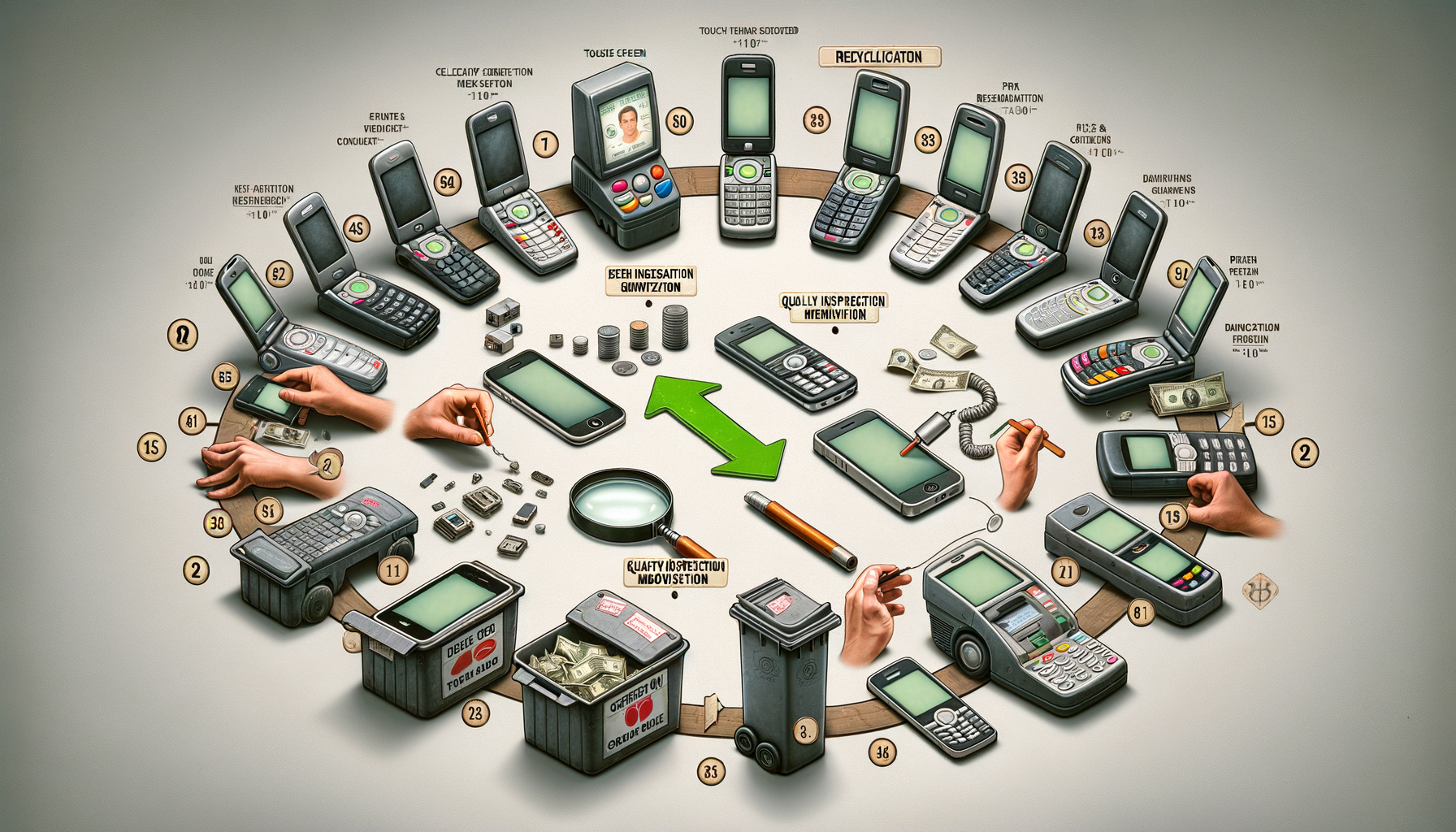Exploring the Dynamics of Phone Trade-Ins: A Comprehensive Guide
The trade-in process for phones in the US allows consumers to exchange their old devices for credit towards new purchases, promoting sustainability and reducing electronic waste.

Understanding the Phone Trade-In Process
The phone trade-in process has gained significant traction in recent years, primarily due to the rapid advancement of technology and the ever-increasing desire for the latest devices. In essence, the process involves exchanging an old phone for credit or a discount on a new purchase. This not only benefits consumers by reducing the cost of upgrading but also contributes to environmental sustainability by encouraging the recycling and repurposing of old devices.
Trade-ins are typically facilitated by retailers, manufacturers, and even some network carriers. The process generally begins with an assessment of the phone’s condition, which determines its trade-in value. Factors such as the phone’s model, age, and any physical or functional damage play a crucial role in this evaluation.
Once the trade-in value is established, consumers can apply this credit towards the purchase of a new phone. This seamless process is designed to be user-friendly, ensuring that even those with limited technical knowledge can participate. Additionally, the trade-in process often includes options for data transfer, ensuring that users can easily migrate their information from the old device to the new one.
Benefits of Trading In Your Phone
Trading in a phone offers several advantages beyond just financial savings. One of the most significant benefits is the positive impact on the environment. By participating in trade-in programs, consumers contribute to reducing electronic waste, as old devices are often refurbished and resold or recycled responsibly.
Moreover, trade-ins provide a cost-effective way to stay updated with the latest technology. As new models are released frequently, trading in an old phone allows consumers to keep pace with advancements without incurring the full cost of a new device. This is particularly beneficial for tech enthusiasts who prioritize having the latest features and capabilities.
Another advantage is the convenience factor. Trade-in programs often streamline the process of upgrading, eliminating the need for consumers to sell their old devices independently. This hassle-free approach saves time and effort, making it an attractive option for many.
Challenges and Considerations
Despite the numerous benefits, there are challenges and considerations associated with phone trade-ins. One primary concern is the potential undervaluation of devices. Some consumers feel that trade-in programs do not offer a fair price for their old phones, especially when compared to selling them privately.
Additionally, the condition of the phone plays a significant role in determining its trade-in value. Devices with visible damage or functional issues may receive significantly lower offers, which can be disappointing for owners hoping to maximize their returns.
Furthermore, privacy concerns can arise during the trade-in process. It is crucial for consumers to ensure that all personal data is wiped from their devices before handing them over. Many trade-in programs offer assistance with data deletion, but users should take extra precautions to safeguard their information.
Comparing Trade-In Programs
When considering a phone trade-in, it is essential to compare different programs to find the one that offers the most value. Retailers, manufacturers, and carriers each have their own trade-in policies, which can vary significantly.
For instance, some programs may offer additional incentives, such as bonus trade-in credits or promotional discounts on new devices. Others might provide flexible options for using the trade-in credit, allowing consumers to apply it towards accessories or other products.
It is also important to consider the ease of the trade-in process. Programs that offer online assessments and mail-in options can be more convenient for those who prefer not to visit a physical store. Additionally, the speed at which the trade-in credit is applied can vary, with some programs offering instant credits while others may take a few days to process.
Future of Phone Trade-Ins
As technology continues to evolve, the future of phone trade-ins looks promising. With increasing awareness of environmental issues, more consumers are likely to participate in trade-in programs, driving demand for sustainable practices in the industry.
Innovations in trade-in processes are also expected to enhance the user experience. For example, advancements in AI could lead to more accurate assessments of device conditions, ensuring fairer valuations and quicker processing times.
Moreover, as the circular economy gains traction, the role of trade-ins in promoting sustainability will become even more critical. Companies are likely to invest in improving their trade-in programs, offering better incentives and more comprehensive recycling options to attract environmentally-conscious consumers.
